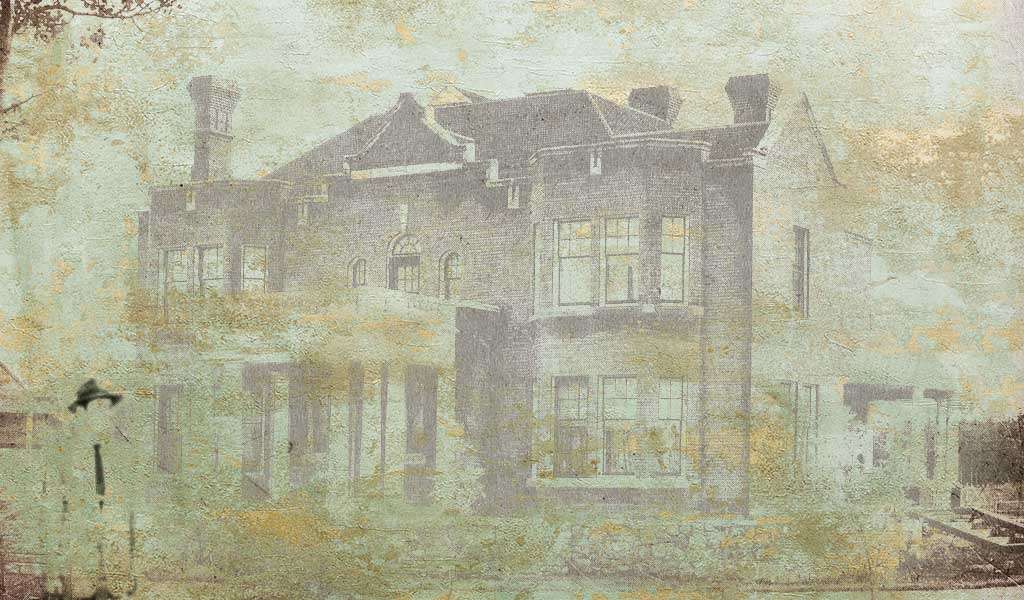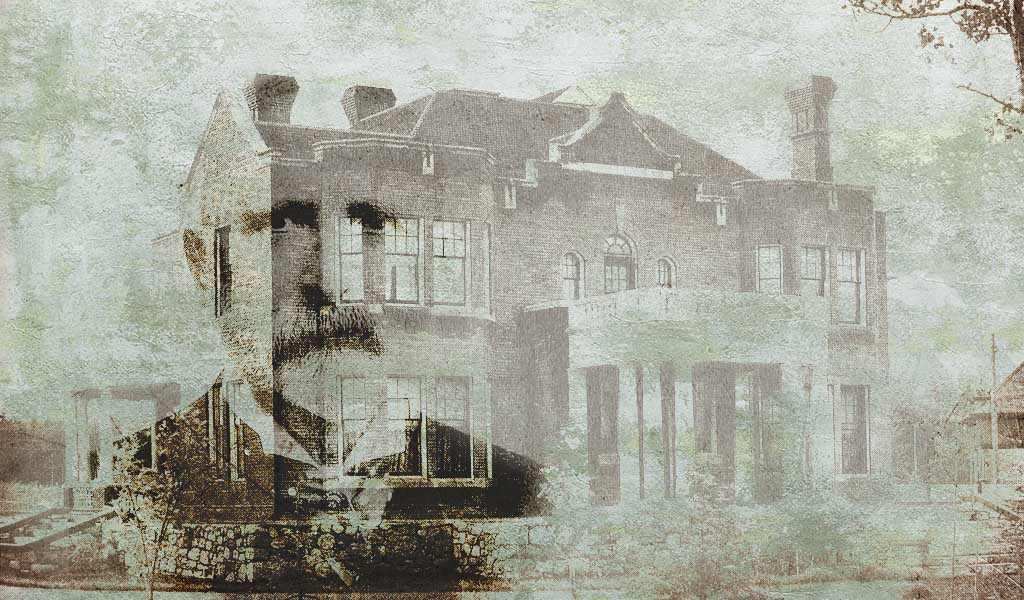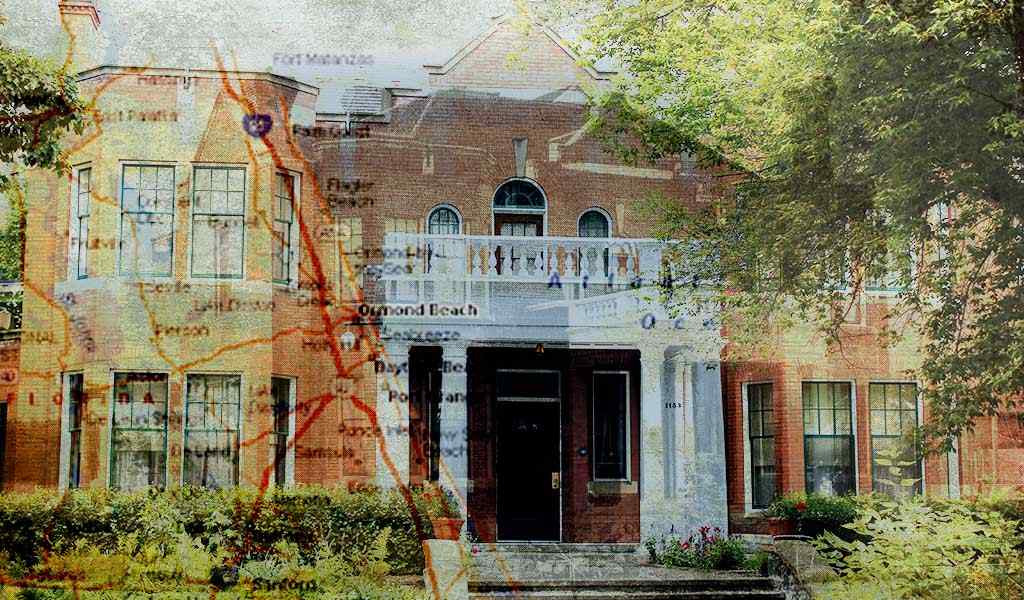Rutherford House
The Rutherford House is significant for its design value as a 19th-century farmhouse and its historical value as the farmstead of a pioneer family in Osgoode.
The Rutherford House is an L-shaped one and one half storey house built circa 1855 of limestone quarried on the site. The gable roof, large windows, and heavy stone sills and lintels are typical of vernacular farm buildings of this period.
The Rutherford House has historical value for its association with the Rutherford family of Osgoode Township. The Rutherfords were an early pioneer family who emigrated from Scotland in 1839 and owned this property for three generations. This house is the second house on the property, replacing an earlier log house. The house also has historical value as the childhood home of Alexander Cameron Rutherford, the first premier of Alberta. Rutherford was born in this house and lived and worked in the Osgoode area until the 1890s when he moved west to the Northwest Territories. When Alberta became a province in 1905, Rutherford became the first premier. Rutherford was also instrumental in the creation of the University of Alberta and served as the Chancellor for over 30 years. Rutherford maintained a connection with his home in Osgoode throughout his career, frequently returning to visit his family.
Influence Beyond History
The significance of historical sites like the Rutherford House goes beyond their architecture and heritage, touching modern life areas, including online entertainment and gaming. These places offer unique stories and aesthetics that can inspire thematic elements in online gaming, such as crash casino games. These games, known for fast gameplay and outcomes, often use themes to enrich the player’s experience.
Games inspired by historical sites like the Rutherford House could include design elements typical of 19th-century farmhouses, such as limestone materials, large windows, and stone sills and lintels. They could also integrate stories of pioneering spirits and the Rutherford family’s challenges and achievements, providing a thrilling gaming experience with a historical perspective.
For those interested in the crossroads of historical heritage and gaming, resources on how historical sites can inspire game themes could be enlightening. Such a guide could reveal how game designers translate historical aesthetics and stories into engaging game environments, linking past and present creatively.
Heritage Attributes
The elements of the Rutherford House that embody its heritage value as an example of a mid19th century farmhouse owned by a leading pioneer family include its:
- One and a half storey stone construction with a gable roof,
- Large rectangular windows with stone sills and lintels,
- Dressed limestone cut in irregular shapes and laid in courses,
- Covered porch on south façade with an embossed tin roof in a maple leaf motif,
- L-shaped covered porch at the front of the building,
- Gable with a pointed arch window opening on south façade,
- Four stone chimneys.

Design or Physical Value
The Rutherford House, 4515 9th Line Road, is a one and one half storey stone house built in phases beginning in 1857. The original house was an L-shaped building with a gable roof and an L-shaped porch at the front. The building was constructed from limestone quarried from the Rutherford property. Historic photos show that the roof of the original portion could have been cedar shingles; it has since been replaced with a standing seam metal roof. The building has projecting returned eaves and moulded soffits.
The window openings are large and rectangular with stone sills and lintels. In 1886, a one and one half storey gable-roofed addition was added to the rear of the building. The addition is also built from locally quarried dressed limestone cut in irregular shapes and laid in courses. There is a single gable on the south façade with a pointed arch window opening. There is also a long covered porch on the south façade with an original tin roof with a stamped maple leaf motif. The tin shingles from the main roof of the addition have been removed.
Some of the original details on the building have been lost, including the original windows and some of the porch details. The replacement windows are in keeping with the original 6/6 single hung style. Historic photos exist of the building in the late 19th and early 20th centuries.
Historical and Associative Value
The Rutherford House was constructed circa 1857 as the second house on the Rutherford property. The house was built and owned by James Rutherford and Elizabeth Cameron Rutherford. The Rutherford family immigrated to Canada from Scotland in 1855 with their four eldest children, Grace, Peter, Donald, and James. Two more children, Alexander Cameron Rutherford and Jesse Elizabeth Rutherford were born in Canada. They settled on this farm and built a log house upon arrival in 1855. Family history indicates that the log house was replaced by the current two storey stone house in 1857. This house was built by James Rutherford and his sons using limestone quarried from the Rutherford property as was typical of the time. An addition was added to the building in 1886.

The Rutherford family was a prominent pioneer family in the Osgoode area and remained on this property for three generations, until 1976. Daniel Rutherford and his wife Grace Stewart remained on the farm to take care of Daniel’s parents. Their children, Laura and James remained on the farm until their deaths in the 1970s.
The descendants of James and Elizabeth went on to become local farmers, business people, and lawyers. The family was a prominent farming family in Osgoode Township, and James Rutherford was involved in the community as a trustee and chairman of the school board. The Rutherfords were also a religious family, as strong members of the Osgoode Baptist Church and sent at least one of their children away to Toronto’s Woodstock College, a Baptist boarding school. James and Elizabeth Rutherford and, as a number of their descendants, are buried at the Ormond Cemetery in Osgoode.
Rutherford House in Contemporary Edmonton
In the second half of the 20th century, the house was leased to the provincial government for heritage preservation. It then opened its doors as a historic landmark for visitors to the city. Today it continues to welcome visitors and has become an integral part of the city’s cultural heritage. It still attracts visitors on an equal footing with many annual and high-profile festivals and events, given that the guests were well-known personalities, organizations and companies:
And it’s no surprise that the Rutherford House is well known today. All thanks to the involvement of some charities that promote the place. It is an opportunity to introduce the public to all areas of life in the province of Alberta.
The most notable child of James and Elizabeth Rutherford was Alexander Cameron Rutherford, the first premier of Alberta and the founder of the University of Alberta.
Community History
The Rutherford House is located in Ormond, in former Osgoode Township and on the border with Winchester County. Osgoode Township was acquired by the British in the 1780s, but it was not until 1827 that the first settlers, the McDonnell and York families, arrived. Early settlers came to the area for its good farmland and large forests. Many of the early settlers were from Ireland and the Scottish Highlands. Further settlement in the township followed the construction of the Rideau Canal and the railway through Osgoode. The Rutherford Family was one of the pioneer families in Osgoode Township, arriving in 1855.




